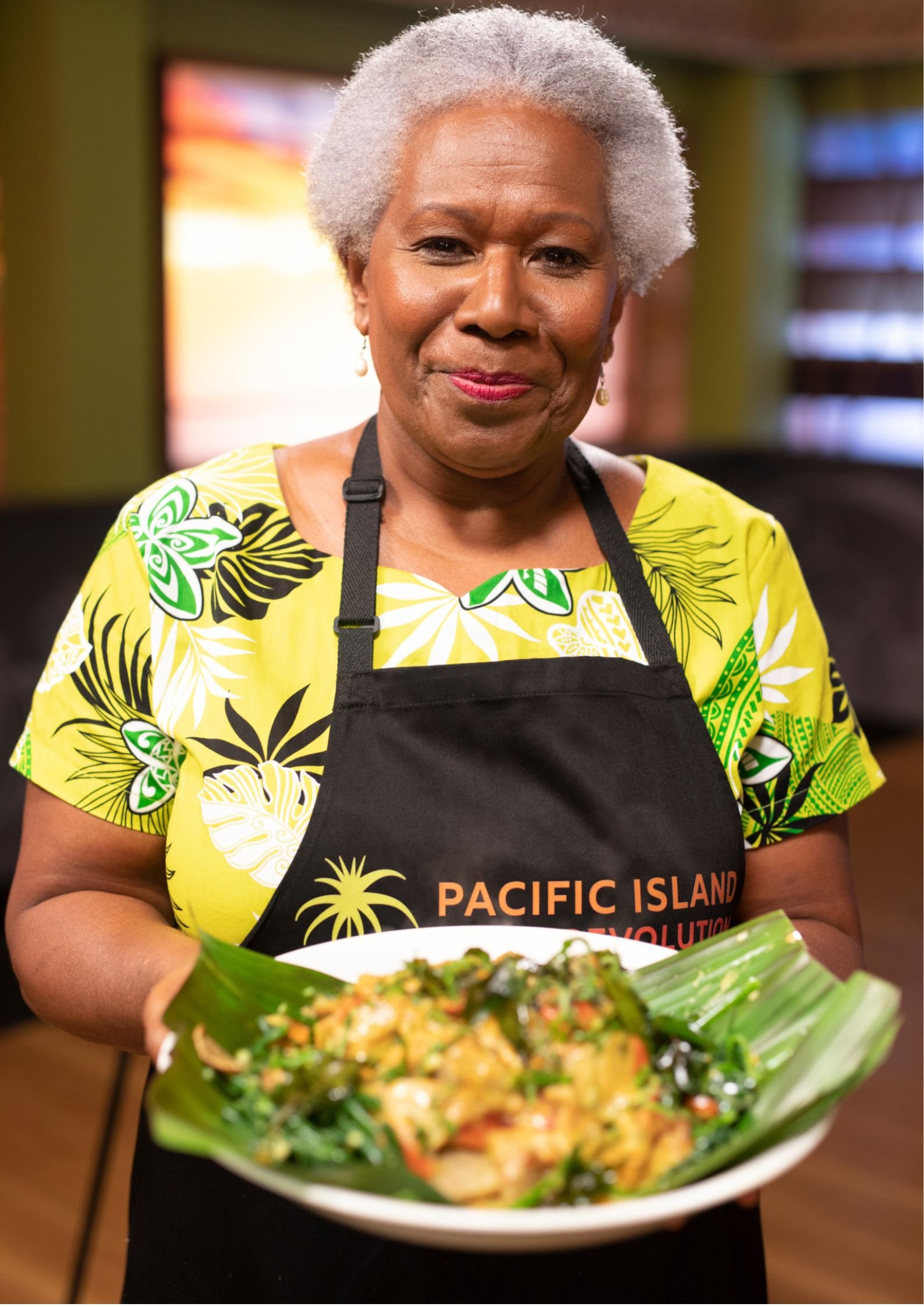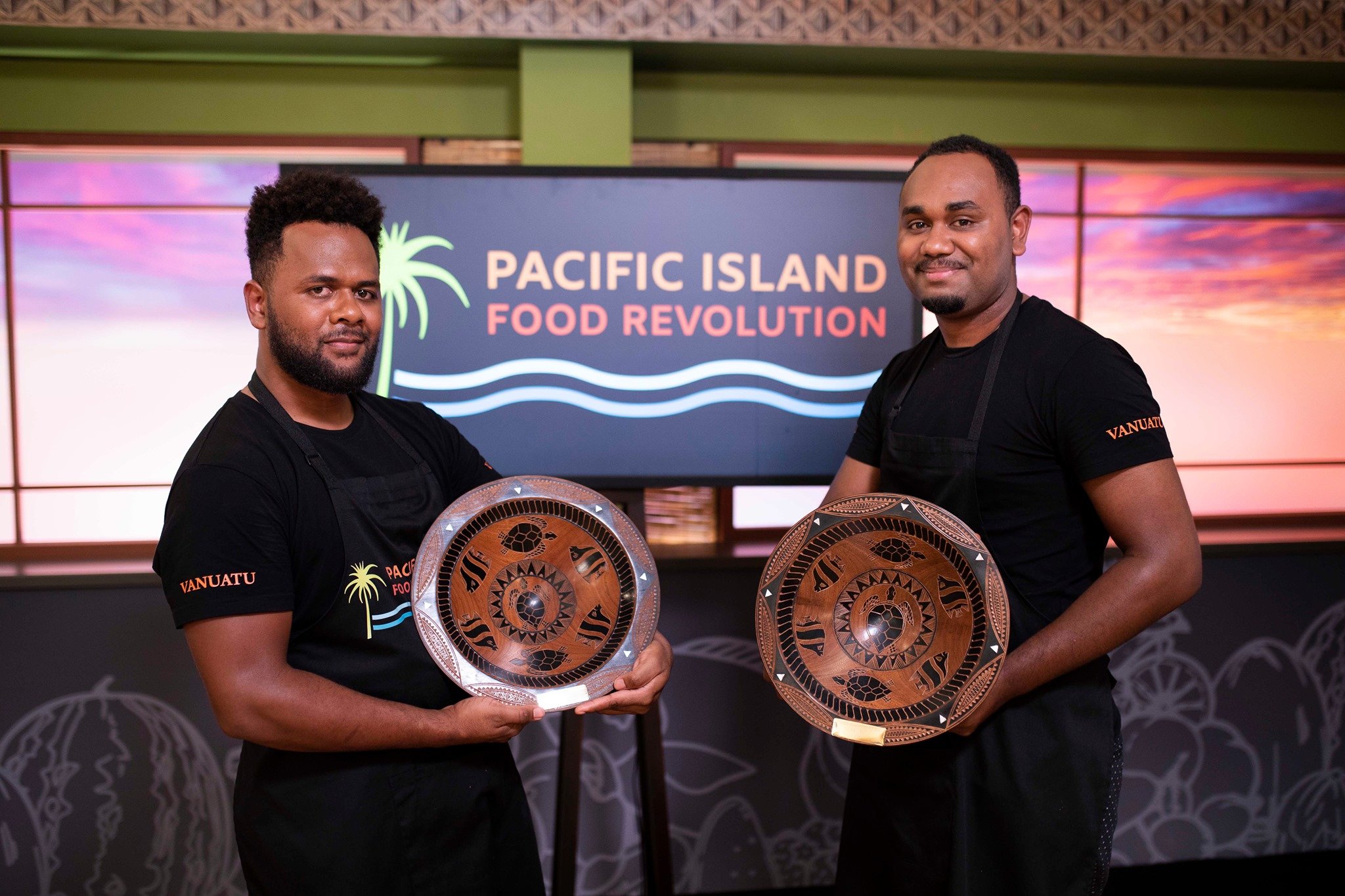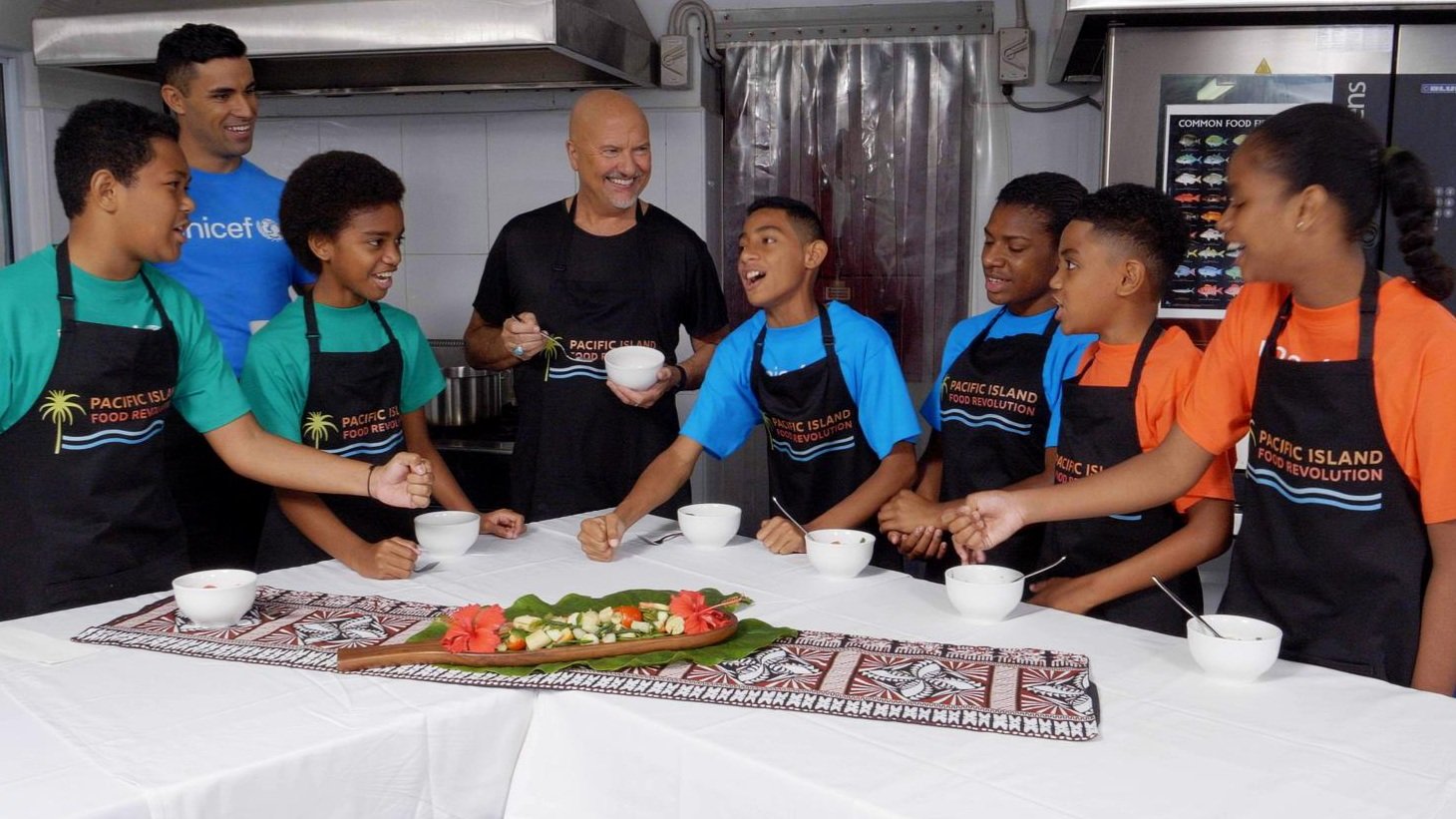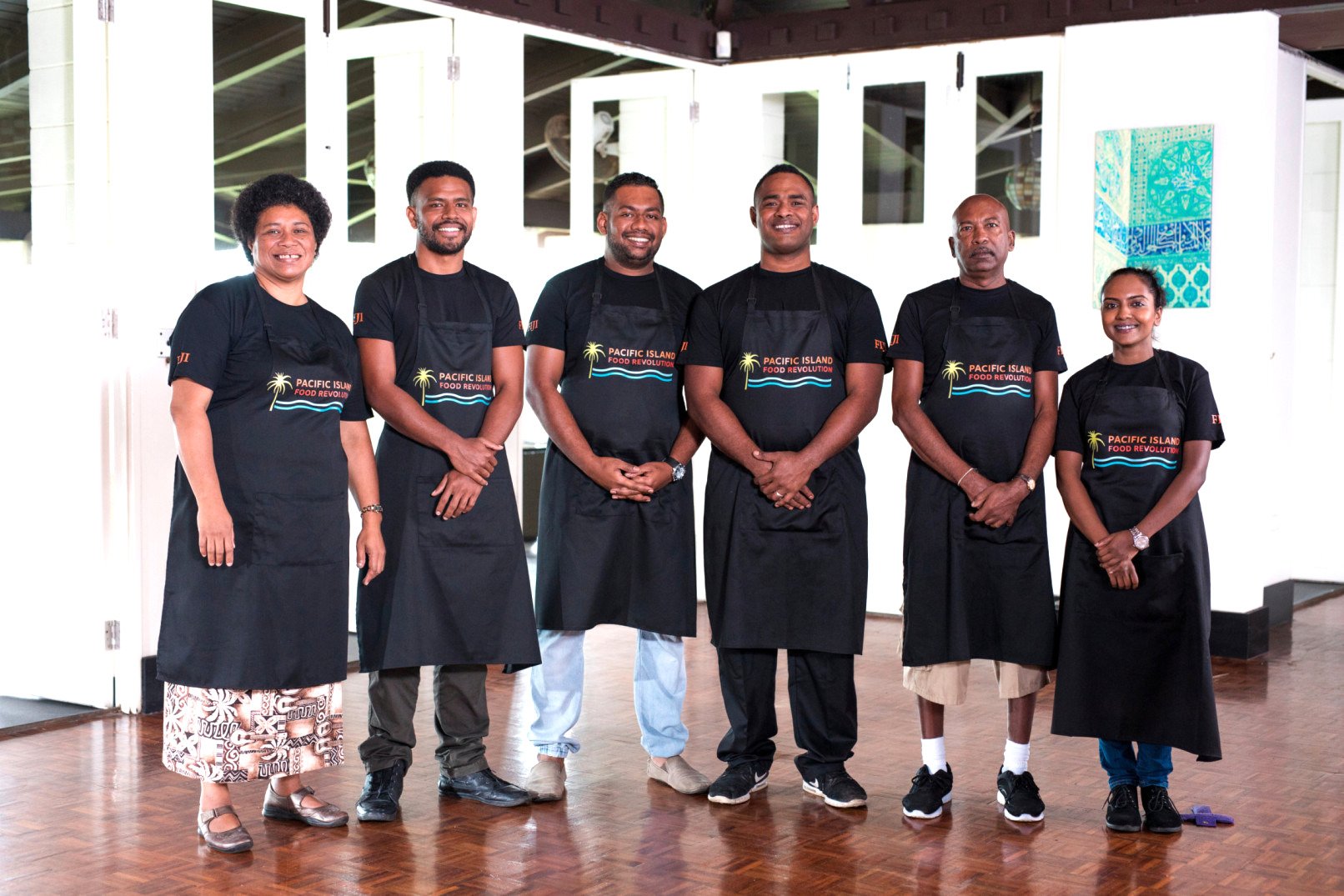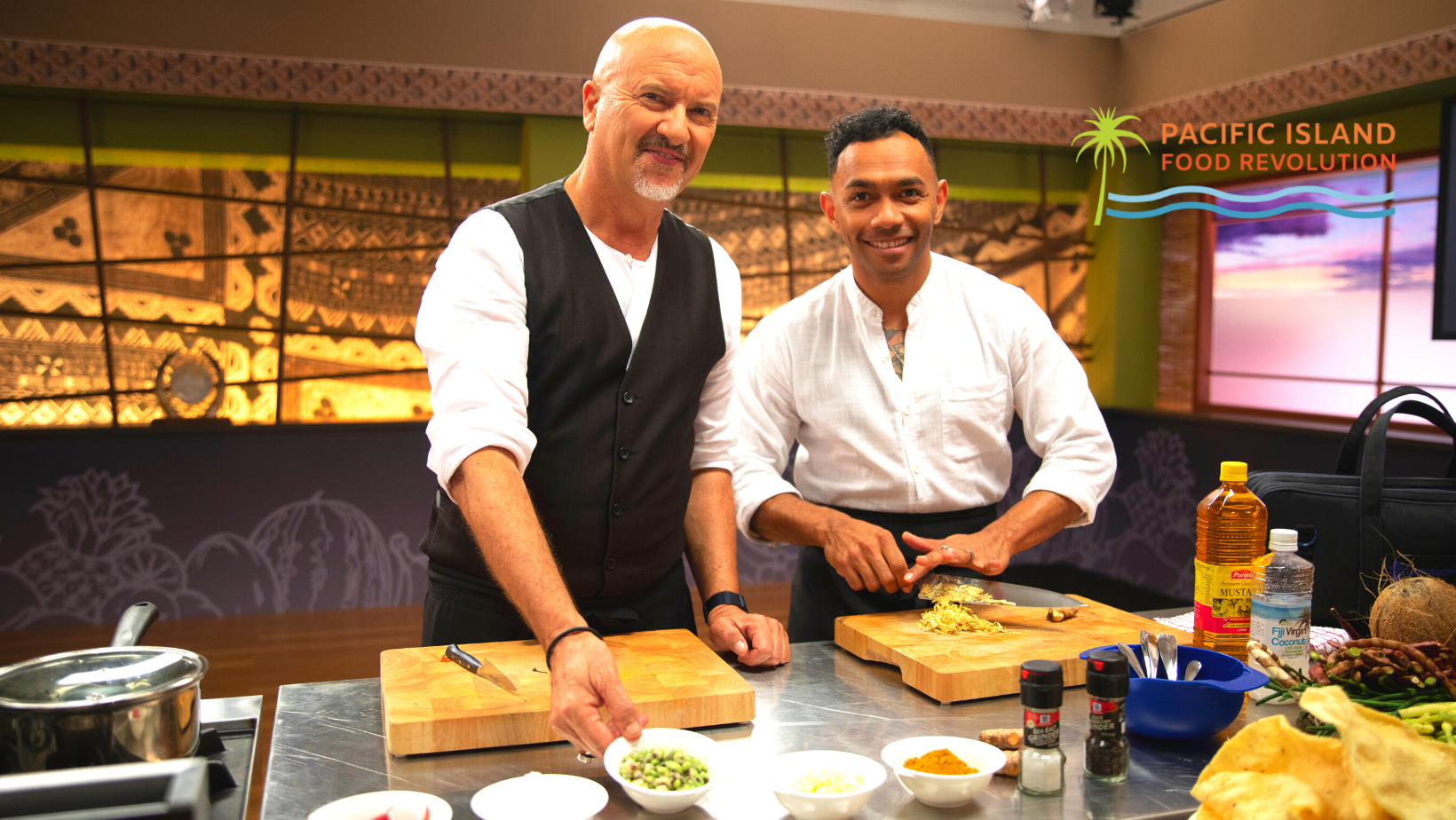Pacific Island Food Revolution: Celebrating Culinary Roots
Meet Robert Oliver, Executive Director and Founder of Pacific Island Food Revolution, a multimedia campaign designed to restore the Pacific Islands to their original healthy diet–and the winner of GLP’s Sustainability Storytelling Competition (SSC) in the “Sustainable Food” category.
Oliver grew up on the island of Fiji, where, he noted, “there was no diabetes…or food-related illnesses” when he was a child. “That’s because we used to eat from the market. We used to eat local food.”
However, over the course of a generation, traditional Pacific Island cuisine was steadily displaced by the process of colonization, globalization, and “the tsunami of marketing of ultra processed foods into the Pacific region.” This onset of processed and imported foods has created an epidemic of non communicable diseases, including heart disease, cancer, respiratory disease, obesity, and diabetes.
Pacific Island Food Revolution (PIFR) is all about the restoration of Pacific Island food culture. “The problem is not just what we eat- it’s how we think,” says Oliver. “I grew up thinking everything from overseas was better- well in food, it’s just not! So this is like turning a mirror on the Pacific itself and saying actually you have the answer! We didn’t need a traditional development project- we needed a revolution.”
And what’s the best way to bring local food back to the main stage? Reality TV, of course.
“We wanted to try and bring the traditional knowledge [of food] into the common context, and we do that through the most modern format of all which is reality tv– that’s what hooks people in.”
In fact, in a recent survey, 42% of viewers reported a positive change in the way they eat. Those surveyed stated that exposure to PIFR made them view ‘traditional village food’ as “sexy, big TV food.” What’s more, the difference in food choices between those who had watched PIFR and those who had not was astounding: in Tonga, PIFR viewers were 262% more likely to choose healthy local foods than non-viewers. The statistics were similarly drastic in other Pacific Island nations: 146% in Samoa, 38% in Vanuatu, 33% in Fiji.
“What we’re doing is working,” Oliver told GLP, “and one of the reasons it’s working is because it’s joyful, it’s happy…it almost looks too easy.”
So what makes the project sustainable? Simple. A choice for local food is a climate positive choice, as it employs local farmers and requires no industrial emissions, processing, or shipping. At its heart, Pacific Island Food Revolution is a local movement, being carried by Pacific Island people. The story of the food is the story of the people. “So long term sustainability is written into the founding recipe.”
To Robert Oliver, thought, PIFR is not just about food or sustainability. “What I most loved about this idea, was that out of something quite dire, a downer–the non communicable disease crisis– we create[d] a brazen celebration of the Pacific itself.”
Check out Pacific Island Food Revolution via the new video above, and learn more about their impact (and delicious recipes) via their website.


